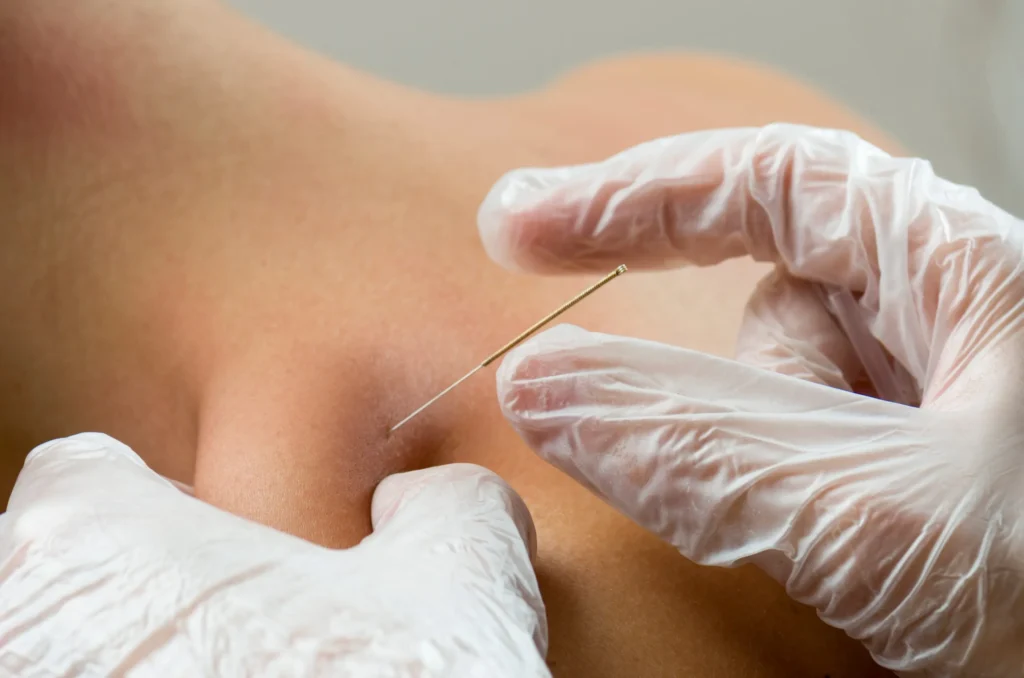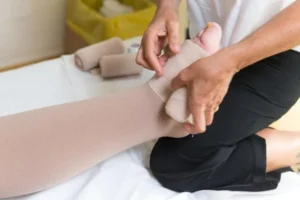Dry needling has become one of the most talked-about therapies in modern physical medicine, and for good reason. If you’ve ever suffered from persistent muscle pain, tension that just won’t go away, or stiffness that limits your movement, you might have heard someone recommend dry needling. But what exactly is it? And how does it work? Before diving into the deep science and benefits, it’s important to set the foundation.
Dry needling is a therapeutic technique where thin, solid needles are inserted into specific muscle tissues—commonly referred to as trigger points. These trigger points are tight bands of muscle fibers that can cause pain, stiffness, and even referred pain to other areas of the body. The goal of dry needling isn’t to inject medication (hence the word “dry”) but to stimulate the body’s natural healing response, release tension, and improve mobility.
Think of it like this: if your muscles were tangled wires, dry needling is a way to untangle them so energy and blood flow can move freely again. Unlike treatments that just mask pain, dry needling targets the root cause—the tight and overactive muscle fibers—helping restore normal function.
Dry needling is a modern, evidence-based therapy designed to treat musculoskeletal pain and dysfunction. The “dry” part means that no medication or fluid is injected into the body; the needles are purely mechanical tools to stimulate change in the muscle tissue.
When a trained therapist identifies a trigger point—often described by patients as a “knot”—they insert a fine needle directly into that spot. This causes a twitch response in the muscle, a quick contraction and release that signals the body to relax and reset the muscle fiber. Patients often describe the sensation as unusual but relieving, like releasing built-up pressure.
Unlike traditional massage, which works on the surface level, dry needling reaches deep into the muscle tissues that hands simply can’t access. This makes it particularly effective for long-standing pain and stubborn knots that don’t respond well to stretching or massage.
The procedure may sound intimidating, but the needles used are extremely thin—much thinner than a syringe needle—and most people report only mild discomfort during insertion. The end result is reduced muscle pain, improved circulation, and better overall movement.
How Dry Needling Differs from Acupuncture
One of the biggest misconceptions about dry needling is that it’s just another name for acupuncture. While both therapies use thin needles, their purpose, philosophy, and application are very different.
Acupuncture is based on traditional Chinese medicine and focuses on restoring balance to the body’s energy pathways, known as meridians. Needles are inserted into specific points along these pathways to regulate the flow of “qi” (pronounced “chee”), the body’s vital energy.
Dry needling, on the other hand, is rooted in modern medical science. It specifically targets trigger points, muscle knots, and areas of tightness to relieve pain and improve mobility. The focus isn’t on energy flow but on correcting muscular dysfunction.
A simple way to understand it: acupuncture is about balancing energy, while dry needling is about releasing muscle tension.
That said, both therapies can complement each other and provide significant benefits. However, if you’re looking for targeted relief from muscle pain, stiffness, or injury recovery, dry needling is often the go-to choice recommended by physical therapists.
How Dry Needling Stimulates Healing
When a needle enters the muscle, it creates a tiny, controlled micro-injury. Don’t worry—it’s not harmful. In fact, this small injury kickstarts the body’s natural healing process. The immune system rushes to the area, bringing fresh blood, nutrients, and oxygen. This helps flush out waste products like lactic acid that accumulate in tight muscles and contribute to soreness.
Additionally, the stimulation affects the nervous system. It helps reset pain signals, reducing the intensity and frequency of discomfort. Over time, repeated sessions can retrain the muscle and nervous system, leading to long-term improvements.
Physiological Benefits of Dry Needling
Some of the key benefits observed in patients include:
- Increased blood circulation in treated areas.
- Release of endorphins (natural painkillers).
- Reduced inflammation.
- Improved communication between muscles and nerves.
- Decreased muscle spasms.
The combination of these effects makes dry needling a powerful tool not just for pain relief but also for recovery, performance enhancement, and overall physical well-being.
Benefits of Dry Needling
Now that we’ve explored how dry needling works, let’s dive into its benefits. This therapy offers more than just pain relief—it can transform the way your body feels and functions.
People often turn to dry needling when other treatments, like stretching, massage, or pain medication, haven’t worked. That’s because dry needling addresses the deeper layers of muscle dysfunction that other treatments can’t reach.
Let’s look at the specific benefits one by one.
Pain Relief and Muscle Relaxation
One of the most immediate and noticeable benefits of dry needling is pain relief. By releasing tight knots and restoring muscle balance, it provides rapid relaxation that patients often describe as “instant freedom” from tension.
The reduction in pain isn’t just physical—it also impacts mental well-being. Chronic pain can take a toll on your mood, focus, and energy. By reducing discomfort, dry needling gives you the freedom to move, exercise, and enjoy life without being constantly held back by pain.
Improved Range of Motion and Flexibility
Tight muscles act like brakes on your body, limiting how far and how smoothly you can move. Dry needling releases those brakes, allowing for greater range of motion. Whether you’re an athlete trying to perform better or someone who just wants to bend down without pain, improved flexibility can be life-changing.
Accelerated Injury Recovery
When you’re injured, your body needs proper blood flow and tissue repair to heal efficiently. Dry needling stimulates circulation, reduces swelling, and promotes faster recovery. It’s particularly useful for sports injuries, where getting back in the game quickly is essential.
Mental and Emotional Well-being
Pain isn’t just a physical problem—it affects your mental health too. Living with constant discomfort can lead to stress, frustration, and even anxiety or depression. By reducing pain and improving movement, dry needling helps lift that mental burden. Many patients report feeling lighter, more energetic, and more optimistic after their sessions.
Conditions Treated with Dry Needling
Dry needling is versatile and can treat a wide range of conditions. It’s not limited to athletes or people with severe injuries—it’s also helpful for everyday aches, postural issues, and chronic pain syndromes.
Some of the most common conditions treated include:
- Sports injuries like muscle strains and sprains.
- Chronic conditions such as fibromyalgia.
- Post-surgical stiffness and scar tissue pain.
- Headaches and migraines caused by neck and shoulder tension.
Sports Injuries
Athletes and active individuals often put their muscles through intense strain. Whether it’s sprinting on the track, lifting heavy weights, or swinging a tennis racket, repetitive movements can lead to overuse injuries. These injuries often show up as tight muscles, strains, or even micro-tears that cause lingering pain.
Dry needling is highly effective for sports injuries because it directly addresses muscle dysfunction. When a muscle is overloaded, it tends to tighten and form trigger points that limit performance. By releasing these trigger points, dry needling restores normal muscle function, allowing athletes to recover faster and return to their training.
For example, a runner struggling with hamstring tightness might find that no amount of stretching or foam rolling helps. But after a session of dry needling, that muscle can finally relax, improving both flexibility and performance. It’s no surprise that many professional athletes rely on this therapy as part of their recovery routine.
Not only does dry needling help heal existing injuries, but it can also serve as a preventive measure. Regular sessions can keep muscles balanced, reduce the risk of re-injury, and optimize athletic performance.
Chronic Pain Conditions
Chronic pain is one of the most frustrating conditions to deal with. Unlike acute injuries, which heal over time, chronic pain lingers for months or even years, often without a clear cause. Conditions like fibromyalgia, sciatica, and myofascial pain syndrome are examples where dry needling has shown significant benefits.
The main reason dry needling works for chronic pain is that it resets dysfunctional muscles and nervous system pathways. Chronic pain often creates a vicious cycle: pain causes tension, tension worsens the pain, and the cycle repeats. By breaking up this cycle with targeted needle therapy, patients can experience lasting relief.
Additionally, dry needling promotes the release of endorphins and serotonin, the body’s natural painkillers and mood stabilizers. This not only helps reduce discomfort but also improves quality of life. For people who’ve tried everything from medication to surgery with little success, dry needling often provides the breakthrough they’ve been searching for.
Post-Surgical Rehabilitation
Surgery may fix the underlying issue, but it often leaves behind scar tissue, stiffness, and muscle imbalances. Whether it’s a knee replacement, shoulder surgery, or spinal operation, recovery can be long and painful without the right therapies.
Dry needling helps in post-surgical rehabilitation by loosening tight muscles around the surgical site, reducing scar tissue adhesions, and improving blood flow to promote healing. For instance, after knee surgery, patients often struggle with quadriceps stiffness that limits their ability to bend and walk normally. Dry needling can release this stiffness, making physical therapy exercises more effective and speeding up recovery.
By integrating dry needling into post-surgical rehab programs, patients often regain function faster, reduce reliance on pain medications, and achieve better long-term outcomes.
Headaches and Migraines
It might surprise you, but many headaches and migraines are actually caused by tight muscles in the neck, shoulders, and upper back. These tight muscles create tension that radiates upward, leading to throbbing pain in the head and even eye strain.
Dry needling provides a powerful solution for this type of pain. By targeting trigger points in the trapezius, sternocleidomastoid, and cervical muscles, therapists can relieve the tension that causes headaches. Many patients report immediate relief and fewer headache episodes after incorporating dry needling into their treatment plans.
Migraines, which are often more severe, can also be managed with dry needling. While it may not cure migraines completely, it reduces the frequency and intensity of attacks, giving patients much-needed relief. Combined with lifestyle adjustments like stress management and proper posture, dry needling can make a dramatic difference for headache sufferers.






